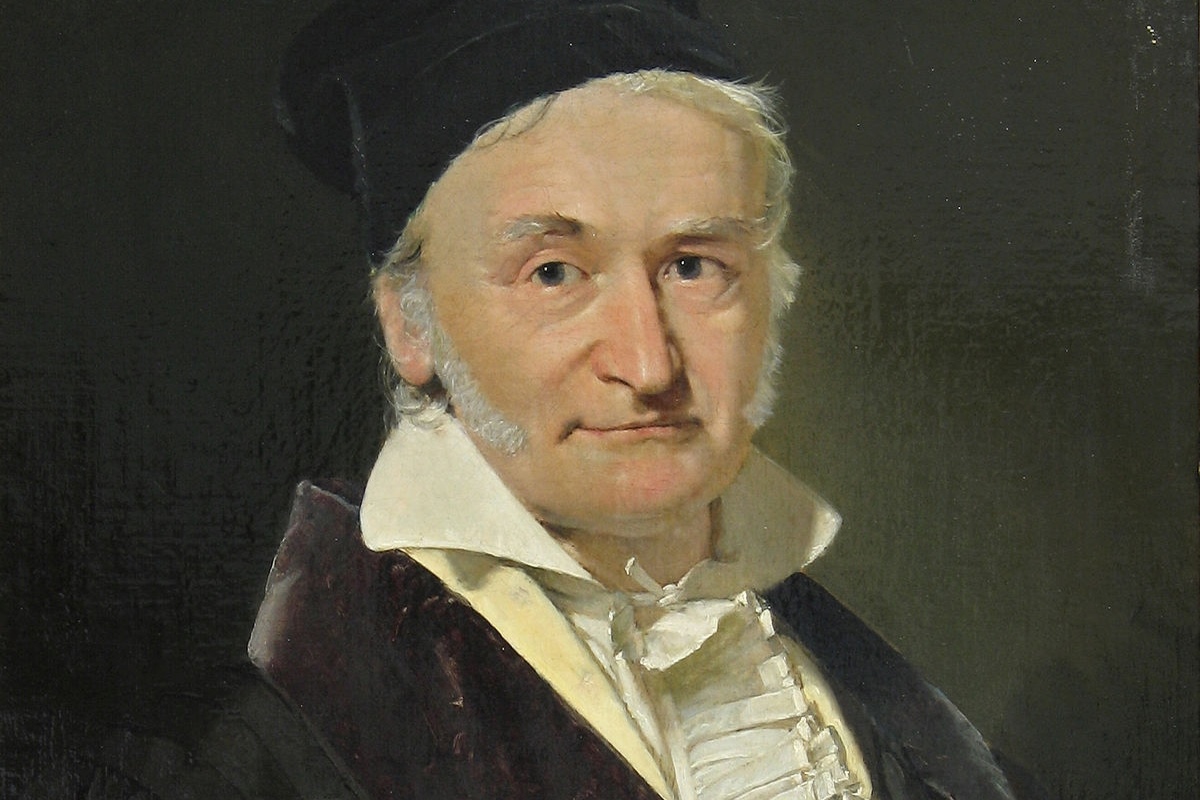
Carl Friedrich Gauss, widely regarded as one of the greatest mathematicians of all time, was a man of extraordinary intellectual prowess. Born on April 30, 1777, in Brunswick, Germany, Gauss’s contributions to various fields of mathematics and science remain unparalleled.
Gauss’s exceptional talent was evident from a young age. By the time he was a teenager, he had already made groundbreaking discoveries in number theory, while his mathematical abilities continued to astonish his professors and peers.
Throughout his life, Gauss made significant contributions to a wide range of disciplines, including algebra, geometry, astronomy, and physics. He revolutionized the field of statistics with his work on the normal distribution curve, now known as the Gaussian distribution.
This article dives into the fascinating life and achievements of Carl Friedrich Gauss, shedding light on 17 intriguing facts about this remarkable mathematician.
Key Takeaways:
- Carl Friedrich Gauss was a math genius from a young age, making significant contributions to prime numbers, geometry, and even astronomy and physics. His work continues to inspire mathematicians and scientists today.
- Gauss’s legacy includes groundbreaking theorems, such as the Prime Number Theorem and the Gauss-Bonnet theorem, shaping modern mathematics and leaving an indelible mark on the field.
The Early Life of Carl Friedrich Gauss
Carl Friedrich Gauss, born on April 30, 1777, in Brunswick, Germany, was a child prodigy in mathematics. At the age of three, he could effortlessly add up a long list of numbers, astonishing his teachers and parents.
Gauss’s Mathematical Genius
Gauss made tremendous contributions to various fields of mathematics, including number theory, differential equations, and geometry. His work revolutionized the understanding of these subjects and set the foundation for future mathematical explorations.
The Discovery of the Prime Number Theorem
One of Gauss’s most significant achievements was his work on prime numbers. He formulated the Prime Number Theorem, which provides a mathematical approximation of the distribution of prime numbers.
Gauss and the Method of Least Squares
Gauss developed the method of least squares, a statistical technique used to estimate the values of unknown parameters based on observed data. This method is widely employed in various scientific and mathematical disciplines.
Contributions to Astronomy and Physics
Gauss’s expertise extended beyond mathematics. He made significant contributions to the fields of astronomy and physics. Gauss calculated the orbits of celestial bodies, including the asteroid Ceres, and made significant advancements in the understanding of magnetism.
The Gauss Sum
Gauss discovered a specific series of numbers known as the Gauss sum. This sum is used in various mathematical calculations and has applications in areas such as cryptography and coding theory.
Gauss’s Controversial Marriage
At the age of 19, Gauss married Johanna Osthoff, but the marriage ended in a separation just five years later. Despite this personal setback, Gauss remained dedicated to his studies and continued to excel in his mathematical pursuits.
Gauss’s Outstanding Mathematical Intuition
Gauss had an extraordinary ability to solve complex mathematical problems in his head. He often refused to show his work, leading to the popular saying, “Do not disturb my circles,” when asked by others how he arrived at his solutions.
The Gauss-Legendre Algorithm for Pi
Gauss developed a notable algorithm in collaboration with fellow mathematician Adrien-Marie Legendre to calculate an approximation of the mathematical constant pi. Their algorithm became a foundation for future pi approximation methods.
Work on Geodesy and Surveying
Gauss played a significant role in the field of geodesy, which involves measuring and mapping the Earth’s surface. His studies and calculations helped improve surveying techniques and led to advancements in cartography.
Gauss and Non-Euclidean Geometry
Gauss made notable contributions to the field of geometry, particularly in non-Euclidean geometry. His work laid the groundwork for the development of new geometrical concepts and challenged long-held mathematical assumptions.
Discovery of the Gauss-Bonnet Theorem
Gauss formulated the Gauss-Bonnet theorem, a fundamental result in differential geometry. This theorem establishes a connection between the curvature of a surface and its topology, playing a crucial role in various areas of mathematics and physics.
Gauss’s Involvement in Education Reforms
Gauss recognized the importance of education and advocated for reforms in mathematics education. He emphasized the need for practical applications and problem-solving skills, revolutionizing the way mathematics was taught.
Gauss’s Collaborations with Mathematicians
Gauss collaborated with numerous mathematicians during his career, including Johann Carl Friedrich Gauß, Carl Friedrich Gauss, Karl Friedrich Gauss, and Carl Gauss. These collaborations led to the exchange of ideas and further advancements in the field of mathematics.
Gauss’s Legacy and Honors
Gauss’s contributions to mathematics and science have left an indelible mark on the field. His accomplishments earned him numerous honors, including the title of Princeps Mathematicorum (the Prince of Mathematicians).
The Gauss-Wantzel Theorem
Gauss-Wantzel theorem, also known as the Impossibility of Doubling the Cube, is a mathematical theorem named after Gauss and mathematician Pierre Wantzel. This theorem states the impossibility of constructing a cube with twice the volume of a given cube using only compass and straightedge.
Gauss’s Influence on Modern Mathematics
Gauss’s work continues to influence and inspire mathematicians and scientists to this day. His profound insights and discoveries have shaped the world of mathematics and laid the foundation for many modern mathematical concepts and applications.
Conclusion
In conclusion, Carl Friedrich Gauss was a brilliant mathematician and physicist whose contributions revolutionized various fields of study. From his groundbreaking work in number theory to his advancements in astronomy and magnetism, Gauss’s impact on the scientific world cannot be overstated. His exceptional intellect, problem-solving abilities, and dedication to research laid the foundation for many scientific principles that are still used today.Gauss’s life story is nothing short of fascinating. From his early genius as a child prodigy to his influential collaborations with other prominent scientists, Gauss’s journey exemplifies the power of curiosity and perseverance in the pursuit of knowledge. His legacy continues to inspire countless aspiring mathematicians and scientists around the world.In sum, the 17 intriguing facts about Carl Friedrich Gauss presented in this article provide a glimpse into the extraordinary life and achievements of this remarkable individual. Gauss’s contributions to mathematics, physics, and other scientific disciplines have left an indelible mark on history, making him one of the most significant figures in scientific exploration and discovery.
FAQs
Q: What were Carl Friedrich Gauss’s major contributions to mathematics?
A: Gauss made significant contributions to many areas of mathematics, including number theory, algebra, geometry, and statistics. He formulated the fundamental theorem of algebra, developed the method of least squares, and contributed to the field of non-Euclidean geometry.
Q: Did Gauss make any contributions to physics?
A: Yes, Gauss made substantial contributions to physics, particularly in the field of electromagnetism. He formulated Gauss’s law for electric fields, discovered the concept of the Gauss unit, and made advancements in the study of magnetism.
Q: Was Gauss also involved in astronomy?
A: Absolutely. Gauss played a pivotal role in the field of astronomy. He calculated the orbit of the asteroid Ceres, developed a method for orbit determination, and contributed to the field of celestial mechanics.
Q: How did Gauss’s early mathematical abilities reveal his genius?
A: Gauss displayed exceptional mathematical ability from a young age. At the age of three, he corrected an arithmetic mistake made by his father. By the time he was a teenager, he had already made significant strides in number theory and discovered several mathematical patterns.
Q: What is Gauss’s most well-known theorem?
A: Gauss’s most well-known theorem is the Gauss-Bonnet theorem, which relates the curvature of a surface to its topological properties. This theorem has applications in various branches of mathematics, including differential geometry and topology.
Gauss's extraordinary life and groundbreaking contributions to mathematics, physics, and astronomy continue to inspire and amaze us. If you found these facts intriguing, consider exploring more astonishing details about Gauss's remarkable genius. Delve into the surprising connections between Gauss's work and the fundamental laws of magnetism. Uncover additional captivating facts about Gauss's law and its significance in the field of electromagnetism.
Was this page helpful?
Our commitment to delivering trustworthy and engaging content is at the heart of what we do. Each fact on our site is contributed by real users like you, bringing a wealth of diverse insights and information. To ensure the highest standards of accuracy and reliability, our dedicated editors meticulously review each submission. This process guarantees that the facts we share are not only fascinating but also credible. Trust in our commitment to quality and authenticity as you explore and learn with us.


